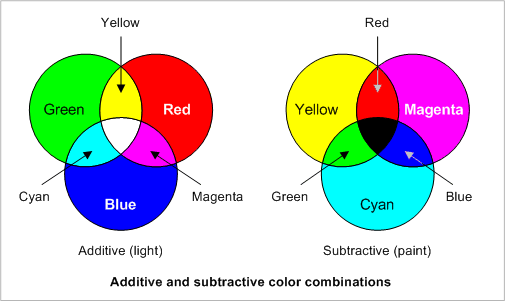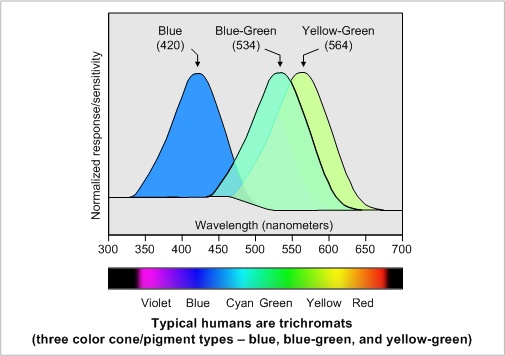
What colors are these:
red
two
yellow
four
green
six
cyan
eight
blue
ten
magenta
twelve
[orange]
What colour is this:
abc
[Halfway between cyan and blue]
The spectrum is a continuum; colours are just how we respond to different wavelengths of light (compare that to sounds, where we can talk about high or low notes, but don't have note colours).

Where we place colour names on the spectrum is partly a function of how we see, and is also culturally defined.
For instance Ao (青) is a Japanese color that covers English blue and green: in Japan, green traffic lights are ao shingo, and blue skies are ao zora.
For instance, when Newton named the colours of the Rainbow in the 17th century, he added indigo, probably to round it out to 7 colours, but it is interesting that he used indigo and not cyan.
An interesting discovery is that although different languages have different numbers of words for colours, they seem to develop in languages in a fixed pattern.There are languages that have a word for red but no word for green/blue, but no languages that have a word for green/blue that have no word for red: if a language has a word for green/blue then it always has a word for red.
Orange as a colour name introduced in the 16th century in English (after the fruit). Before that it was just a yellowish red.
We are all taught that there are three prime colours, and that any other color can be achieved by adding different proportions of the primes.
We have to treat additive and subtractive different. Red paint looks red because it absorbs the other colours, and only the red is reflected. Green paint looks green because it absorbs all other colours (including red), and only reflects green. So mix red and green paints and the red will absorb green light and the green will absorb red light and the result will look black. This is subtractive.
On the other hand shine a red light and a green light, and the two will mix, and produce what we perceive as yellow. This is additive.
So if you are working in inks or light, you use different combinations to produce different colours.
In ink: yellow+blue=green
In light: red+green=yellow

So on screens the three primes used are red, green and blue
On printers: yellow, cyan and magenta.
On printers they use black as well, because a mixture of yellow, cyan and magenta produces a muddy grey colour.
On screens black is all pixels off, and r+g+b is percieved as an acceptable white.
Eyes have sensors split into rods and cones which roughly describe their shapes. The rods are for low light, and only perceive a single color range. The cones are split over three fequency ranges.
We are told that we have sensors for red, green and blue. In fact this is wrong. We have sensors for blue and two sorts of greens, although the shorter wavelength cones do indeed cover red.

So any wavelength is converted to three inputs. For instance cyan stimulates all three sorts, yellow stimulates two.
Notice that this explains why red-green colour blindness is so prevalent (10% of men). In fact you can say that such men just have two sorts of sensors. They can see red, they just can't distinguish it.
It is also reported that a tiny percentage of women have four types of sensors. So in a sense we are nearly all colour blind compared with them.
So if you shine some red and some green into an eye, it will fool it into thinking it sees a single colour, yellow.
This is very different to how we hear two sounds.
This is why red+yellow doesn't make orange: if you did a spectral analysis, it would register red and yellow, not orange. It would just look orange.
Digital cameras can see infra red: want to know if your remote control is working? Look at it with the screen of your digital camera.
But: watch out for swimming costumes that don't block infrared.
Some women see 4 colours.